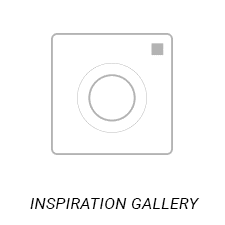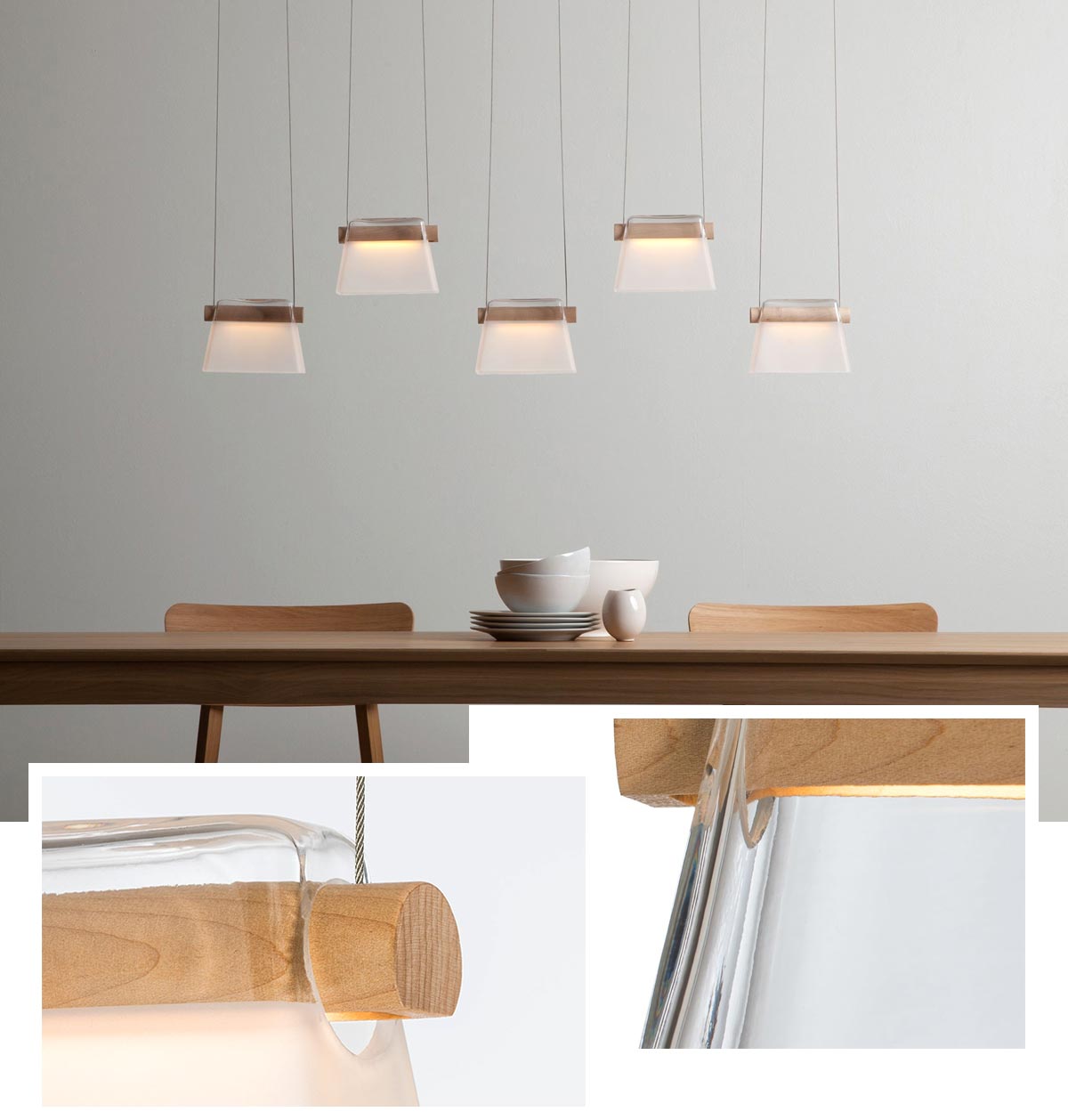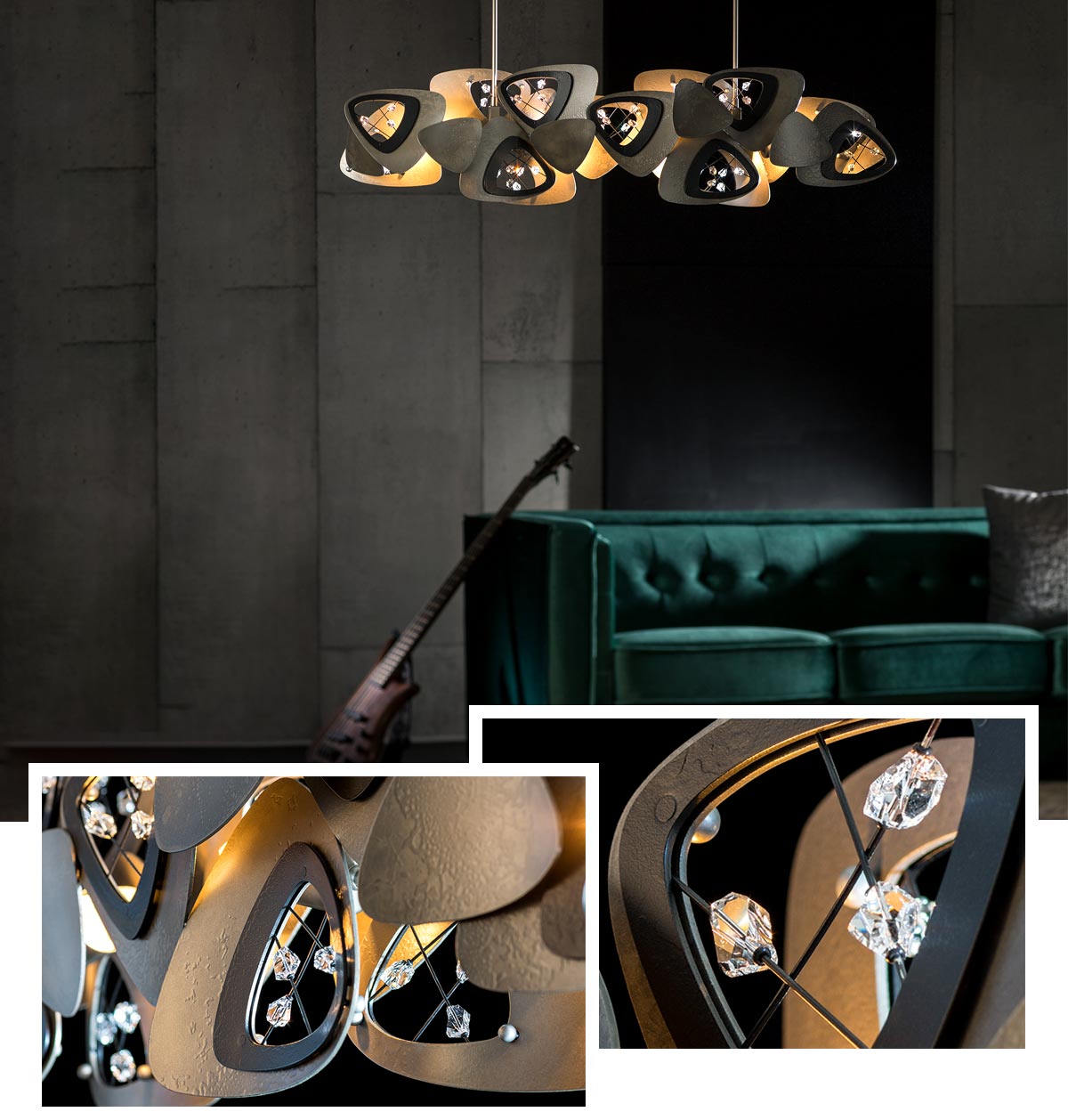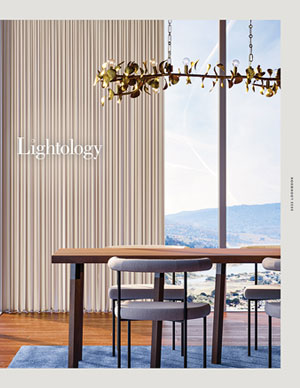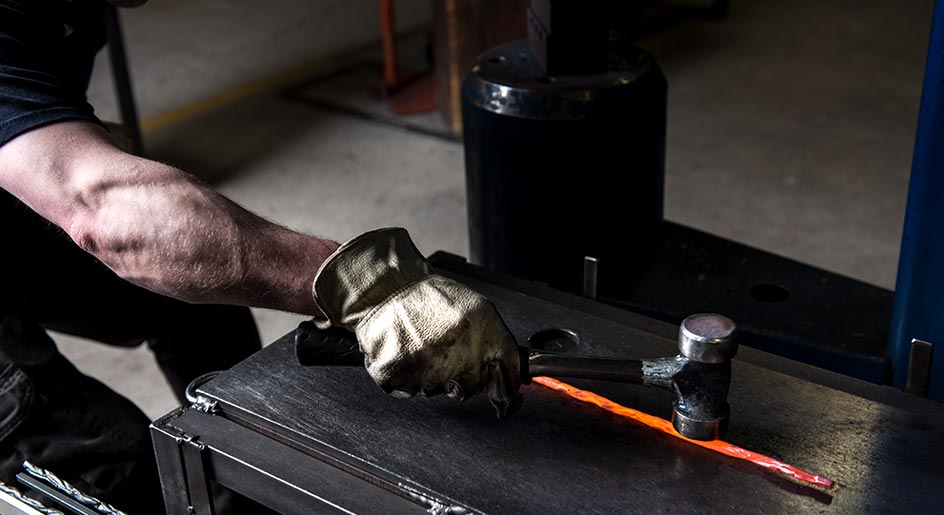
Up Close:
The Blacksmiths Reinventing Modern Lighting
Tucked along the western edge of Vermont, an inspiring studio of designers, glassblowers and blacksmiths carry old-world charm into the 21st century. Hubbardton Forge - one company with three distinct voices including Vermont Modern and Synchronicity - started in 1974 by two guys in an old barn with some borrowed tools. Today, they build lights that embody craftsmanship, quality and cutting-edge artistry.
From two friends to a diverse design team, Hubbardton Forge paved a path of eco-friendly, sculptural fixtures, ushering in a modern era of blacksmithery. We get up close and personal with the team to explore their most iconic pieces.
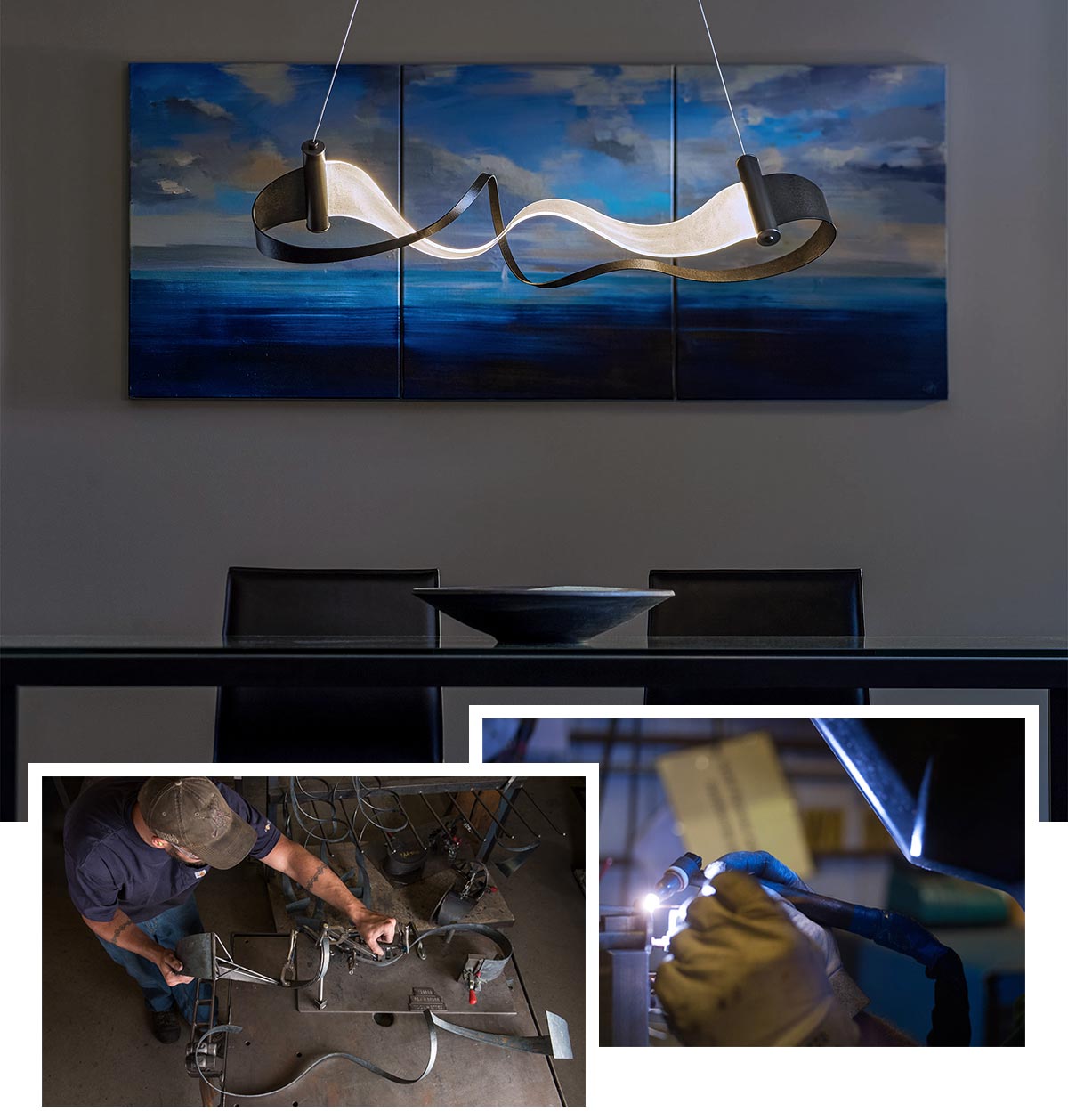
It’s hard to believe the Zephyr is made of steel and acrylic - how do you create such an organic form with such tough materials?
It all started with a pencil sketch, and then a small model made from copper and paper to figure out the shapes in 3D. Adam in our prototyping department was a big help. After that, it was working directly with heated acrylic and steel, both bent by hand, striving throughout to maintain the fluidity that the pencil sketch had.
What inspired the overall shape?
I believe it originated from a challenge to me posed by our Design Director David Kitts, to go further with the acrylic LED light-guide we had used in several products up to that point. I became intrigued by the idea of melding steel and light-guide into one continuous form, which led to the initial sketch.
What were some of the difficulties you ran into when fabricating this piece?
Mostly engineering issues- getting all the elements to come together mechanically while maintaining the flow of the forms, and at the same time having it light effectively, and hang correctly. Luckily we have a great team that can focus on all the details to make it work.
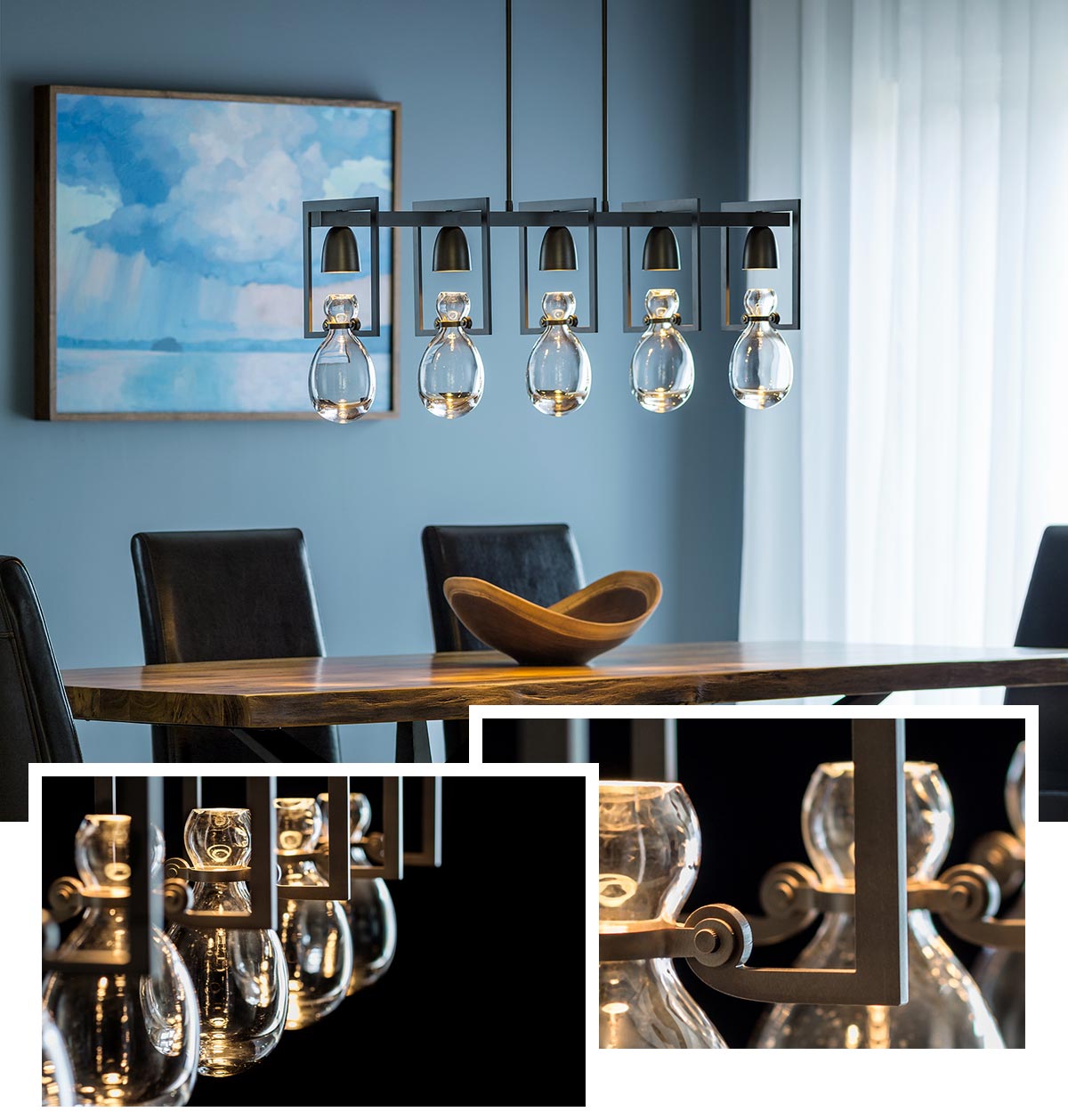
The Apothecary name and inspiration are apparent, but what lead to this design?
A heavy piece of clear blown glass held not in the usual way, then lit externally as the centerpiece was at the origin of the piece. Repeating the arrangement gave the overall fixture shape an interesting presence with the combination of soft curves and square corners.
What are some of the hidden details of this piece that you might not notice at first glance?
I think that where the glass and steel meet, it's interesting the way the steel reacts to the shape of the glass and the hardware that connects them. The bracket has a human gestural quality, as it reaches down to hold the glass tight.
Where do you imagine the Apothecary working best?
It’s exciting that we are living in a time of eclectic aesthetics, because the mixing of design elements in a piece like this one also makes it a great fit in many different settings and spaces, even those that may not be over a dining table.
There’s an almost nest-like quality to the Griffin, was this part of the inspiration?
Not initially. Our goal was to develop a dining pendant that had elements of a starburst chandelier but with a greater organic and rustic feeling to it. We started by developing the steel textural element that we wanted to be “bark-like.” Once we added the organic glass to these steel branches, it was hard not to see the nest-like quality of the piece.
How did you create the organic textural elements on the steel pieces?
We developed a steel die for our hammers that “munch” the raw bars creating the texture. Each “branch” takes numerous hits under the hammer to create the final forms.
How does the lighting itself influence the rest of the design?
In this case, the lighting itself really accentuated the overall feel of organic forms and materials . It is very bold so we had to make sure the rest of the design could keep up!
I can’t help but bring up the Will Ferrell, Blue Öyster Cult skit on SNL - is this truly the inspiration?
Yes! It was a divine moment.
Wood is a unique material choice, considering Vermont Modern’s history with metals - what made you go this route?
With a cowbell shape for the glass I wanted to give the piece a slightly Scandinavian feel with the natural maple. The wood is also a great insulator for the LED light source inside of it.
If we were playing “(Don’t Fear) The Reaper” right now, what would you recommend?
I’d recommend the 5 light Cowbell with the Frosted Glass option!

It’s no easy task to make steel appear delicate, what is the process like to make this piece?
A laser jet is used to delicately cut the fine details of the steel canopy. We then carefully form it over a custom made mold to give the piece more volume.
The Kiwi being a flightless bird native to New Zealand, I can’t imagine many reside in Vermont - what sparked the idea for this piece?
I have a thing for flightless native birds of New Zealand. Actually, as I was sitting at my desk pondering what a new shape of glass could be, I had a kiwi fruit sitting there which was the inspiration. The original prototypes of the glass were much more kiwi fruit-like than the larger lemons we ended up with, but the cuteness of the design made the name Kiwi stick.
What rooms or commercial spaces do you envision the Kiwi chandelier living in?
The Kiwi would work well in more intimate dining spaces, or over a bar area or kitchen counter. It has a nice presence about it without feeling heavy or intrusive, and invites you to sit underneath it moreso than the average chandelier.
This piece is so intricate and so beautifully organic, how is it made?
The LED “light guide” is made from clear acrylic rods individually cut and bent, Then these are all glued to a common “spine” in a somewhat random arrangement, resembling the tentacles of a sea anemone.
What is your design process like - do you sketch first? Build a model? Create something in CAD?
My favorite way to work is very experimental, using physical materials and light sources to experience a design three dimensionally, with the appropriate light and shadow. In the case of the anemone, it was truly starting with the acrylic rod and finding the forms that had the most pleasing appearance when lit.
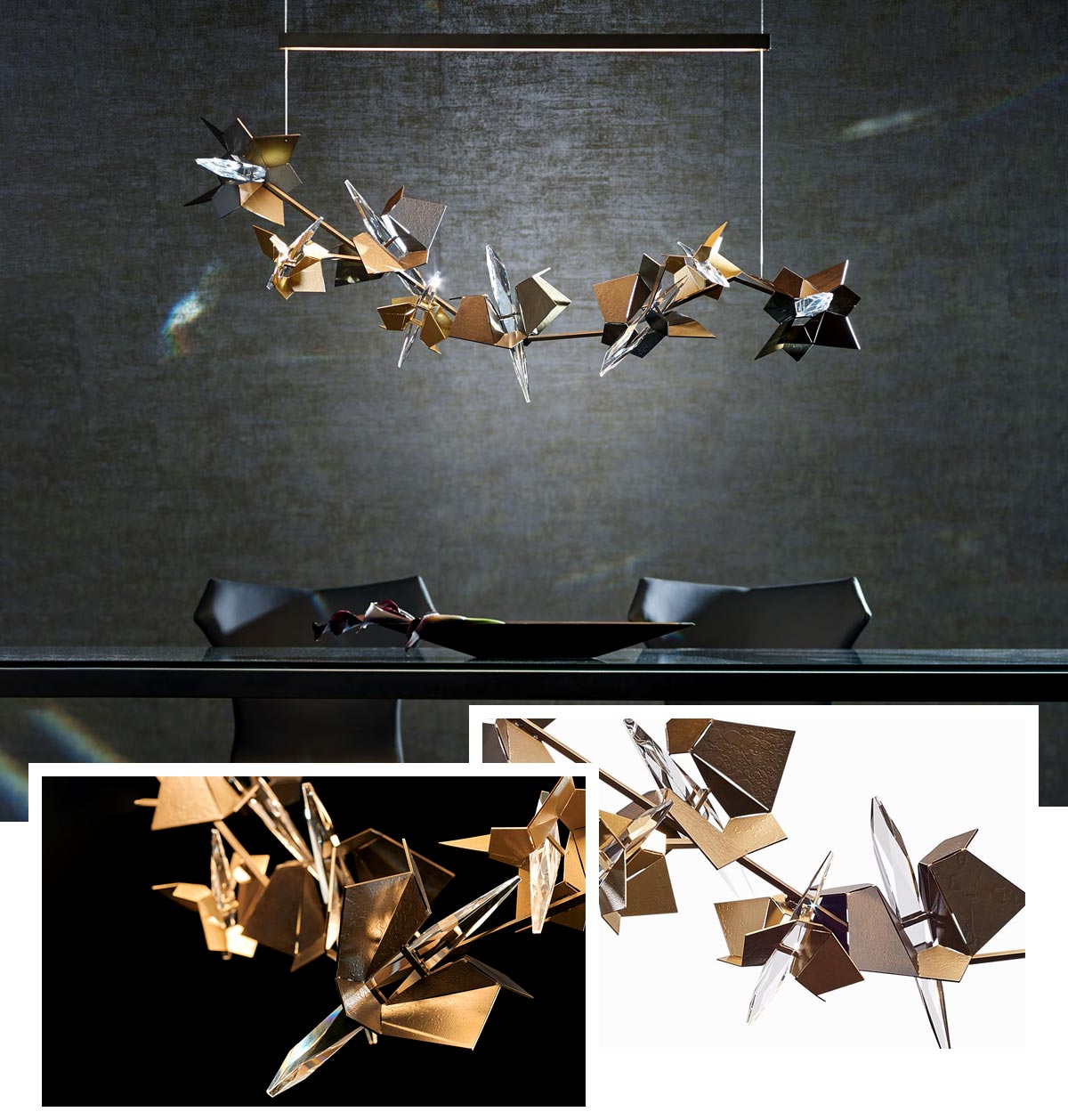
Of all the flowers to choose from, what drew you to Belladonna aka deadly nightshade?
The name actually came after the design was pretty far along. I think because the sculptural elements have a flower like appearance and the forms are kind of dangerous looking, we thought it was appropriate to choose a poisonous flower to name it after.
This piece is so sculptural - both lit and unlit - where exactly is the light coming from?
The fixture light source is coming from an LED light strip hidden up in the bar suspended over the sculptural elements. Because of the optical nature of the highly polished glass crystals, there is a mirror effect from the other light sources in the space where the fixture is hung.
Synchronicity fixtures always have a jewelry-like quality to them, what are some of the pros and cons to working with crystal?
They are very beautiful and draw attention to whatever they are near, which makes them a natural showpiece. The biggest con is probably how difficult they are to photograph well. Because we combine the fine metalwork of the forge with the crystals in our fixtures, we need to add artificial studio lighting to see the metal work, but this can also wipe out the dazzling look of the crystals.

The name Gatsby conjures a sort of Roaring Twenties, Art Deco style - what is it about this piece that captures that period?
Adam, one of our art directors came up with the name and it seemed to make sense based on the repeating geometric patterns along with some glamour from the cut crystal.
This chandelier is all about scale - how do you determine how big or how small to go with each shape, each element?
Through the prototyping process, we work through the repetition of the forms, the scale of each individual element, the contour and the right amount of movement.
What is involved in making these large crystal pieces - what is that process like?
The initial glass form is cast and then each facet is ground and polished to its final shape. Again having some irregular asymmetry to the glass gives it some movement when set against the backdrop of the geometric forms around it.
Hendrix is an absolutely legendary name, is this piece intentionally tied into the famous rock musician?
The project started with the simple shape of the guitar pick, as it developed, it evolved into a very edgy, rock ‘n’ roll look. That led to the name Hendrix.
What are some of the more rock and roll elements of the Hendrix chandelier?
It is sharp, tenacious, some Chutzpah, but also with an intentional harmonic flow.
How do you make something like Swarovski crystal feel edgy?
I have always enjoyed taking contrasting elements and combining them together, while still maintaining and creating an aesthetic, original, and organic look.




